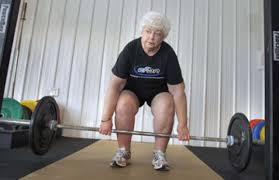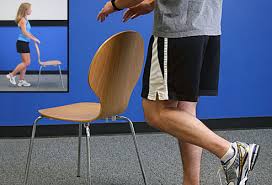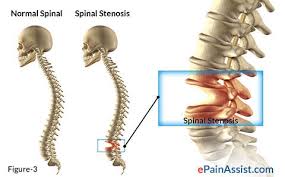Blog Layout
FIVE MOST CHALLENGING SPORTS AND THEIR LONG-TERM IMPACT ON OUR BODIES
Website Team • March 13, 2020

Five sports that currently have a high ranking in terms of being among the most challenging include: boxing, competitive gymnastics, wrestling, competitive swimming, and ice hockey. These sports offer competitors the thrill of demonstrating their strength, skills, and agility, but they are also physically demanding and may lead to injuries that can have a long-term impact on the body. Let’s take a closer look at how these sports can affect our bodies.
Boxing
Boxing is a controversial sport due to its known dangers that include contusions, soft tissue lacerations, eye injuries, tooth damage, nose injuries, spinal injuries, and jaw fractures, as well as head and upper limb injuries. The more often a boxer fights, the greater the risk is for an injury, and boxing-related injuries frequently interrupt training or actual competitions. This particular sport has an injury rate of about 12.8 injuries for every 1000 hours of training. However, what is even more concerning about boxing is that there have been reported cases of neurological complications that developed due to head injuries, and in some cases, death. Therefore, boxing is an intense sport that is associated with long-term physical and mental injuries, and unfortunately an increased risk of death.
Competitive Gymnastics
Competitive gymnastics involves a lot of strength training, conditioning, endurance, and flexibility. Gymnasts may train for 20 to 30 hours a week year-round, although most beginners start with 6-10 hours a week. This sport is associated with a high incidence of hand, wrist, ankle, and foot injuries, as well as neck, shoulder, knee, hip, back, and chest injuries. The recovery period may be brief, depending on the type of injury; however, serious accidents may end the season for some athletes or even cause long-term complications that prevent an athlete from ever returning to the sport.
To reduce the occurrence of injuries, gymnastics programs incorporate fall training, which teaches athletes how to fall and roll in a manner that expands the force of the impact over a larger area of their body. However, despite this training, the injury rate for competitive gymnastics is still comparable to that of wrestling and football. Therefore, gymnasts need to work closely with their trainers and sometimes physical therapists to prevent or manage injuries.
Wrestling
Wrestling is a combat sport that has been around since 700 BC. In wrestling, athletes fight each other by using only their upper bodies, unless it is a full body competition. This sport requires athletes to demonstrate maximal strength, speed, muscular endurance, and stamina, among other skills. However, the rapid and high-impact nature of this sport typically results in injuries that include tongue cuts, bruises, scrapes, cauliflower ear, and concussions. The most problematic injuries are those that occur to the head and shoulders as these types of injuries are responsible for lengthy treatment and recovery periods, and often require surgery. Physical therapy often becomes an integral part of the recovery process as it helps improve mobility and range of motion, especially following injuries such as shoulder dislocations, knee sprains, or back injuries.
Competitive Swimming
When competitive swimming is performed using proper swimming technique, this resistance exercise does not cause the same degree of physical impact on the body as many other sports. However, due to the almost endless repetition of arm rotations, an injury known as swimmer’s shoulder may develop.
More specifically, research shows that about 47 percent of collegiate swimmers and 48 percent of master’s swimmers experience shoulder pain that persists for more than 3 weeks. A similar study reported that MRIs performed on a group of elite swimmers demonstrated inflamed muscle tissue in the shoulders. Following swimmers for a length of five years has also shown that shoulder pain frequently becomes a long-term issue for a number of competitive swimmers, along with neck and back pain. Therefore, competitive swimmers have to take active steps to care for their shoulders and this may include working closely with physicians and physical therapists.
Ice Hockey
Ice hockey is a fast-paced sport in which players compete, on an ice rink, to make goals. This sport involves a lot of physical contact, as one of the principles of the game entails checking an opponent, which refers to body contact that is permitted for the purpose of taking the opponent out of a play. Because of the aggressive nature of the sport, hockey players frequently experience strains, sprains, contusions, joint injuries (e.g., shoulders, knees, hips), and even head injuries, including concussions. For a number of injured players, physical therapy becomes the key to maintaining flexibility and reducing their recovery time. Physical therapists may show players stretching techniques that strengthen the muscles and prevent future injuries. They can also help players incorporate proper warm-up and post-activity routines that protect the muscles from damage, which is critical for players who experience long-term problems as a result of their injuries.
Conclusion
In summary, the long-term and sometimes serious injuries that are associated with challenging sports, such as the ones discussed in this article, often warrant a visit to a physical therapist. Physical therapy can help prevent injuries or improve mobility, increase range of motion, and promote recovery if an injury occurs. Furthermore, physical therapists play an important role in helping athletes enhance their performance and maintain their quality of life. Yes, the right type of therapeutic assistance can make a significant difference in a player’s outcomes.
Request An Appointment
Request appointment form
Thank you for contacting us.
We will get back to you as soon as possible.
We will get back to you as soon as possible.
Oops, there was an error sending your message.
Please try again later.
Please try again later.
Locations
1905 Olde Homestead Lane
Suite 101 | Lancaster PA 17601
717-945-6938
Fax: 717-945-7502
1128 Cocoa Avene
Hershey PA 17033
717-533-7000
Fax: 717-533-7005
© 2025
Hershey Orthopedic and Spine Rehabilitation










